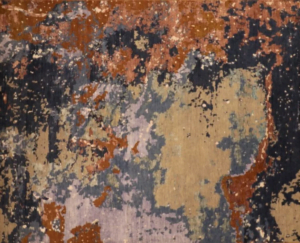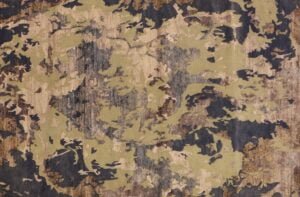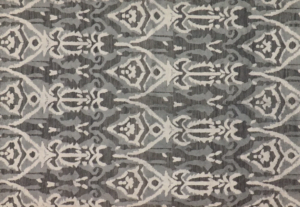Between the Black Sea to the west and the Caspian to the east lie several Soviet States, the most important of which are Georgia, Armenia, Azerbaijan and the Russian Federated Socialist Republic (which includes the State of Daghestan). These States make up the area in which most Caucasian carpets were made. They are populated by many different peoples and tribes and there are two main religions, Christianity and Islam. Until the nineteenth century the Caucasus was part of Persia who ceded it to Imperial Russia. Because of this vast commingling of peoples who also wandered into Turkey and Persia, Caucasian carpets have been a source of confusion, even to experts.
However, if we take some long-established classifications, we will be able to differentiate some of the most well-known and characteristic Caucasian carpets.
Of the nineteen or twenty names which have at some time been chosen to describe these pieces, we have selected eleven of the most widely used:
Baku, Derbend, Karabagh, Shirvan, Chi-Chi Erivan, Kazak, Soumak, Daghestan, Kabistan, Kuba
It can be safely stated that a Caucasian carpet by any other name will turn out to be a particular variant of one of the above to which a trade name has been attached. It need only be added that the word Armenian is often used, somewhat misleadingly, in older books as a synonym for Caucasian.
Baku
These carpets are named after the city of Baku, a sea-port on the Caspian now in the Soviet State of Azerbaijan. It is the port where carpets manufactured in the city itself and in the immediate vicinity are marketed. Almost all these are more than fifty years old and can be recognized by their distinctive pattern. This always consists of a field of large rectilinear pear motifs which, in the case of this particular type of carpet, tend to resemble fir cones more than pears; they are arranged in rows on a
field on which several octagonal medallions may also appear. The field color is invariably dark blue, whilst the pears are usually woven in shades of cream, ivory and yellow.
Chi-Chi
These are made by a tribe called the Tchechen, by which name they are often known, which inhabits the moutains of north-west Dagestan. Chi-Chi carpets are nearly always more than fifty years old, are rare, and extremely popular with collectors. They have their own distinctive design. The field, always either dark blue or dark red, is woven with a minute, all-over mosaic pattern, on which there are rows of small octagons, again made up of mosaics. One of the borders at least always has rows of eight-petalled flowers, which are often woven between the bars of a Greek meander.
Dagestan
The region of Dagestan is now part of the Russian Federated Socialist Republic. Although many carpets are referred to as Dagestan’s, the one specific type that should be so-called is the distinctive prayer Dagestan. The mihrab arch on these prayer rugs is always six sided and the field of the mihrab is nearly always covered with a diamond-trellis pattern in which there are small, geometrically shaped polychrome flowers. The field is generally of an ivory color. As far as can be established no Dagestan carpets have been made since the beginning of the Second World War. Although they are not of particularly outstanding quality they are nevertheless of considerable beauty and are keenly collected.
Derbend
This type is only included since it is a frequently used name. Derbend carpets were made in the port of Derbent, capital of the Dagestan district, and closely followed the Dagestan design. Lewis wrote early this century that they were considered of little artistic interest and most authorities would agree with this judgement, although the fact that most of these are old means that they have quite a high market value.
Erivan
This is a strictly twentieth-century type of carpet and indeed has only been made for about the last twenty years. It is named after the city of Erivan, a few miles from the Turkish border and about 150 miles from Tabriz in Persia. Although generally inferior copies of Shirvans, these carpets are, for modern pieces, remarkably well woven and are fairly colorful and decorative.
Kuba (Kabistan)
Kabistan is a name which has probably caused and still causes more confusion than any other in the world of Oriental carpets, the problem being that nobody seems to be very certain exactly what a Kabistan is, although everybody agrees that it does exist. The town of Kuba in the Shirvan weaving district of southern Dagestan is the probable origin of these pieces, although there is now a specific type of carpet known as Kuba.
The problem arises because Bakus, Kubas, Daghestans and Kabistans frequently have the same designs thus making it almost impossible to differentiate them. In general, the type of carpet which uses the ram’s-horn design on the field is called a Kabistan. Although even with this, some authorities disagree. If the piece does not show the distinctive pattern, we have demonstrated to be characteristic of Baku’s, Chi-Chis and Dagestans, and if the designs are more geometric than floral, then the carpet is either a Kabistan or a Kuba which, to the Russians, are synonymous. A distinctive type of old Kuba is one with three large X patterns on the field, which certain experts refer to as Sejur. Another type is the dragon Kuba which, as its name implies, has figures of dragons woven into the field. Many authorities claim that it was at Kuba that the famous Dragon and the Phoenix carpet in Berlin was woven sometime in the fourteenth century. It should be noticed that modern carpets using Kabistan/Kuba designs are being woven at Ardebil in Persia; these use cotton for the warp and weft and are not of good quality.
Karabagh
Karabagh carpets are made in the southernmost area of the Caucasus, bordering on Persia. They are very floral in character, often having three or four large bouquets of flowers in Western European style on a central field and smaller floral sprays in a wide border. The main point of recognition for these pieces, however, is not the design but the field color, frequently an extraordinarily vivid shade of magenta, which, being too strong for the Western market, was at the beginning of this century often changed by a chemical process to a dark black brown. There are also some rare prayer rugs in which the mihrab usually has a central column with contrasting geometric patterns on either side and a square-arched top. Modern Karabagh’s are made which keep to traditional designs but are usually of poor quality.
Kazak
The Kazak is one of the most famous types of Oriental carpet. Antique examples stopped being made around 1920 and should not be confused with the so-called Kazaks which the Russians have been marketing for the past ten years and which are poor-quality copies of several Caucasian designs, many of which are not Kazak within the traditional meaning of the word. The colors of a Kazak are usually bright reds, blues, greens and yellows, with a large amount of white. One of the most characteristic designs is the so-called sunburst which is in reality a schematized form of the Russian double-headed eagle. Carpets bearing this design are sometimes called Tcherkess. In general, Kazak carpets have a field filled with one or more large geometric medallions usually of rather eccentric shape (although the Greek cross and a design resembling the cross of Lorraine are not unusual). The border often bears a polychrome crab pattern on a white ground. Because of the bold, colorful surfaces, and also the extremely hard-wearing nature of the weave, which is coarse but dense, Kazaks are very popular with collectors.
Shirvan
This is a famous but problematic name. The carpets were woven in south Caucasia and marketed at Baku. None has apparently been made since the beginning of the Second World War, and the best examples date from the first two decades of this century or earlier. As we have said before, there is very little difference between Shirvans, Kabistans, Kubas and Daghestans, and any differences there may be purely academic. As Jack Franses says, Rugs are often labelled Shirvans for want of a better name’. Most authorities suggest that Shirvans are more floral in appearance than other Caucasian carpets but in general they would appear to be as geometric, if slightly more delicately so, as any other Caucasian piece.
Soumak
Soumaks are called after the city of Shemakha. They are also sometimes referred to as Cashmeres, apparently because their weave resembles that of cashmere shawls. They are nearly all more than sixty years old and the designs are much the same as Dagestan’s, Shirvans and other Caucasian carpets of the same group. They have, however, one great distinguishing feature: they are flatwoven and have no knotted pile, the only Oriental carpet thus made apart from the type known as kilim which we have already discussed. Some of the weft threads are wrapped around the warp in a kind of chain-stitch embroidery, making a decorative raised pattern. An additional design characteristic is the frequent appearance of small animals woven amongst the normal geometric medallions; they also always have a wave-scroll border.
l value and should only concern the most fastidious of collectors.
Many Caucasian carpets use bold, almost primitive, geometric forms, some of which, as we have seen, are distinctive from one particular type to another, although it should be emphasized once again that the motifs one thinks are peculiar to one type will frequently appear on another. The exceptions to this are the Karabagh, which has rather crude floral designs, and the Shirvan, which, on little actual evidence, many authorities declare to be more floral than is usual for a Caucasian piece. Nearly all Caucasian carpets tend to be bright and colorful, and it is rare to find them in large sizes.




